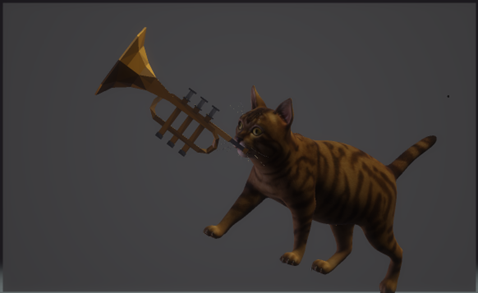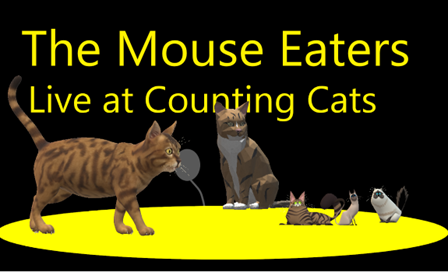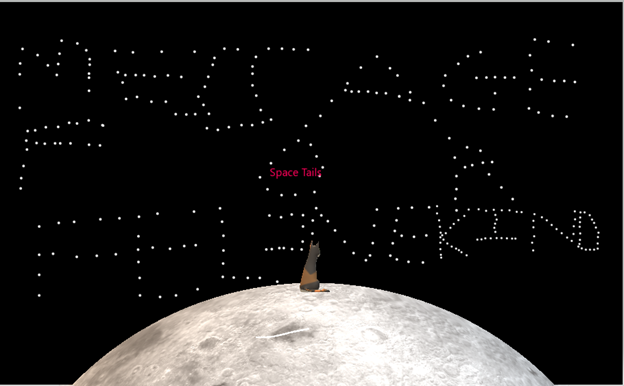Dear diary,
Raven here.
Well folks. It’s time for my 5th and final edition of the Raven 15. I really wish I could do 50 albums like that human Cobain, but these paws just can’t handle that much writing. Anyway. Here I go.
- My 13th album is a classic example of cat crossover. It’s Catnip Surprise, the seventh studio album for the Chicago jazz-rock trio The Fairly Furry Friends, released in 1973. The Fairly Furry Friends formed in Chicago in 1966 by singer Kathy “cat fight” Purry, guitarist Paul Yowler and keyboardist Joey Scratcher Brown. They immediately signed with Chicago major label Feline Fun Records and released their first two LPs, Catmandu in 1967 and Coraline the Cat in 1968, neither of which were very successful. “If you listen to those first two records,” Purry recalls in a 1996 interview with PITA (Paws in The Air) Magazine. “you really won’t like it. We had no drummer, no real sound. It was just us messing around in the studio and recording it. Lots of ear-splitting distortion and no pace at all.” Then, in 1969, an executive from Feline Fun named Furry Fry offered to join in on drums, and the band agreed. Later that year, The Fairly Furry Friends released their third LP, Quite a Long Tail, which had a new surf-rock sound. “Adding Furry Fry to our band made us way better,” cat fight remembers. “Fry knew we needed a new sound. She’d been listening to famous human bands at the time and thought we needed to sound like them.” Quite a Long Tail topped the Catboard Charts, and The Fairly Furry Friends were now a sensation. Following the success of QLT, the group released Firekitty in 1970, Splashy Cat in 1971 and We’re Your Furry Friends in 1972.Then, in 1973, The Fairly Furry Friends were unexpectedly dropped from Feline Fun Records. Feline Fun claims the band was “too unruly and disturbing at live shows,” but we’ll never know for sure. Of course, that meant Furry Fry had to leave the group and return to her job at Feline Fun. “Losing Fry was a scratch to our hearts,” Purry says. “Yowler and I both looked up to Fry as a musician and friend. But The Fairly Furry Friends weren’t breaking up just yet.” The two put out a call for a new drummer, and Shelly Hissy immediately responded. “I had just broken up with my jazz trio,” Hissy remembers. “I responded to that call because I just knew my new Furry Friends needed a jazzier sound.” Since she was the only one who responded to the call, Shelly Hissy was now The Fairly Furry Friend’s new drummer. With Hissy, the band did indeed transition to a jazzier sound, while still expanding on their surf-rock sound. They released their seventh album Catnip Surprise in 1973. The album features a swinging trumpet and saxophone sound provided by Yowler and Purry. Favorite songs include “Litter Boxy Shuffle,” “Catnip (That’s What I Want),” and “Water… Why Does it Always Have to Be Water!”
 14. My second-to-last album is the only live album on this list. It’s the iconic live album of The Mouse Eaters’ “last ever” show at the Counting Cats Theater in Seattle. The Mouse Eaters formed in 1988 in Yakima, Washington by singer Kitten Oldman, rhythm guitarists Dale and Adam Hardclaw, electric guitarist Pat Furfluffer, drummer Longpaw Smith and bassist Cory Whiskery. The band signed with Seattle label TriEar Records and recorded the material for their debut studio record These Paws O’ Mine in just three days flat. The album was released in 1989 and solidified the band’s distorted thrash-metal sound. They then released Cataphors in 1990, Dog Days in 1991 and Kibble Crash in 1992, often considered the great run of cat albums ever. Then, in 1993, The Mouse Eaters announced the first of a few claimed “final performances.”“After the overwhelming amounts of touring to pour first three records,” bassist Cory Whiskery remembers in an interview with Ki10 News. “We genuinely thought we were done. We got offstage at the Pawdome that night and decided to call it quits. We had no idea we had more in us.”And they did. Two weeks after the show, an executive at TriEar named Carrie Pawse, called up the band and asked if the band could reunite.
14. My second-to-last album is the only live album on this list. It’s the iconic live album of The Mouse Eaters’ “last ever” show at the Counting Cats Theater in Seattle. The Mouse Eaters formed in 1988 in Yakima, Washington by singer Kitten Oldman, rhythm guitarists Dale and Adam Hardclaw, electric guitarist Pat Furfluffer, drummer Longpaw Smith and bassist Cory Whiskery. The band signed with Seattle label TriEar Records and recorded the material for their debut studio record These Paws O’ Mine in just three days flat. The album was released in 1989 and solidified the band’s distorted thrash-metal sound. They then released Cataphors in 1990, Dog Days in 1991 and Kibble Crash in 1992, often considered the great run of cat albums ever. Then, in 1993, The Mouse Eaters announced the first of a few claimed “final performances.”“After the overwhelming amounts of touring to pour first three records,” bassist Cory Whiskery remembers in an interview with Ki10 News. “We genuinely thought we were done. We got offstage at the Pawdome that night and decided to call it quits. We had no idea we had more in us.”And they did. Two weeks after the show, an executive at TriEar named Carrie Pawse, called up the band and asked if the band could reunite.
“Pawse loved our show,” drummer Pat Furfluffler remembers. “She wanted us to come back together, and we agreed.”
The Mouse Eaters reunited in 1994 and released their fourth LP What Human Owners Can Do, followed by Furry Times in 1995, Purr Party in 1996 and Sandpaper Tounge in 1997. Then, in 1998 they decided once again that this was the end. The Mouse Eaters’ historic performance at the Counting Cats Theater, released as an album simply titled Live at Counting Cats in 2000, would prove to be their actual final show, at least until 2023, when they reunited for a show at the Bumbercat festival. Let’s just say that the band is currently on hiatus. Favorite songs from the live album are the early hits “Hacked Up Just For You,” and “Fur on Fire,” the later, more melodic songs “Down on Kitty Cat Way,” “Dog Days,” and even a song improvised on the spot called “Human at the Door.”

- My final album for you has to be Message for Felinekind, the first and only album from London post-punk group Space Tails, released in 2004. Space Tails formed in London in 2003 by vocalist Catson Collins, guitarist Marty Moonfur, drummer Anabelle Clawdico, and bassist Bella ShortWhisker. The band signed with major label Litter Life Records and released their first single “Human on a Wire,” in 2003. The song became an instant hit worldwide. Cat Trap Magazine even declared the song “the best thing since the invention of catnip.” In David Catterdale’s seminal biography of London’s feline post-punk scene titled Hack Me Up and Go: A Complete History of London’s Post-Punk Revolution, the song is described as “an undoubtedly punk anthem that served as the jumping off point of every band that followed.” After the single’s success, Space Tails were ready to record an album. In early 2004 they booked recording time with Litter Life producer Don Furmoli and recorded their debut full length album Message for Felinekind in just five days. According to Hack Me Up and Go, “Furmoli loved Space Tails so much and wanted to get the music out into the world as soon as pawsible.”
Message for Felinekind was released on March 9, 2004, and became, most agree, even more widely successful than “Human on a Wire.” The album rocketed to #1 on the Catboard Charts and stayed there for 16 consecutive weeks, beating Cora Caterwall’s 1978 debut record Gone Are the Dogs for the longest-lasting Catboard Chart topping album. Sadly, as Space Tails prepared to record a second album, drummer Anabelle Clawdico developed a mysterious paw rash. As Moonfur and ShortWhisker recall in an interview with Feline 9 Magazine, “She insisted she could record the album, but we could tell she was hurt. By the time we rushed her to the vet, it was too late.” Anabelle Clawdico died in the vet’s bed on April 5, 2005.
But Space Tails’ legacy lives on. Message for Felinekind continues to inspire artist after artist and Space Tails vocalist Catson Collins has since launched a mildly successful solo career. Favorite tracks from Message for Felinekind include “Mouse Encounter,” “Scratchin’ On Something Else,” “Just A Hackin’ And A Litterin’ Around,” and “Curse of the Cat Butt.”

Well, folks. The Raven 15 has drawn to a close, but don’t worry. I’ll still update you all with regular diaries every once in a while. But I guess I’ll leave all you cats and kittens with this question. What are some of your favorite feline bands? I’d love to know. Anyway. See you later. MROWWWWWW!!!!!!
- My final album for you has to be Message for Felinekind, the first and only album from London post-punk group Space Tails, released in 2004. Space Tails formed in London in 2003 by vocalist Catson Collins, guitarist Marty Moonfur, drummer Anabelle Clawdico, and bassist Bella ShortWhisker. The band signed with major label Litter Life Records and released their first single “Human on a Wire,” in 2003. The song became an instant hit worldwide. Cat Trap Magazine even declared the song “the best thing since the invention of catnip.” In David Catterdale’s seminal biography of London’s feline post-punk scene titled Hack Me Up and Go: A Complete History of London’s Post-Punk Revolution, the song is described as “an undoubtedly punk anthem that served as the jumping off point of every band that followed.” After the single’s success, Space Tails were ready to record an album. In early 2004 they booked recording time with Litter Life producer Don Furmoli and recorded their debut full length album Message for Felinekind in just five days. According to Hack Me Up and Go, “Furmoli loved Space Tails so much and wanted to get the music out into the world as soon as pawsible.”
THE END…
Lucas you are an inspiration!
Thank you for sharing the stories and your work!
Awesome 👏
Dear Handsome Boy, This diary entry is great! Thanks so much for informing us and giving us some pleasure, which we all need these days. Love, Judy
Great albums, thanks for sharing.